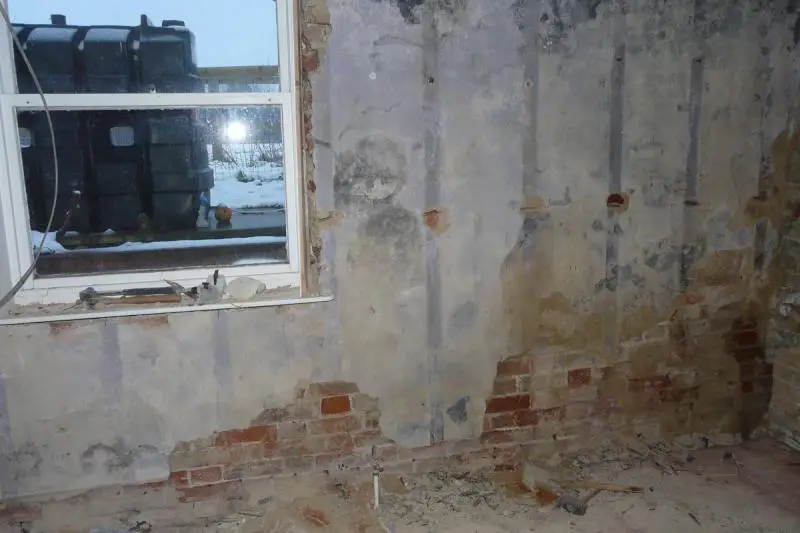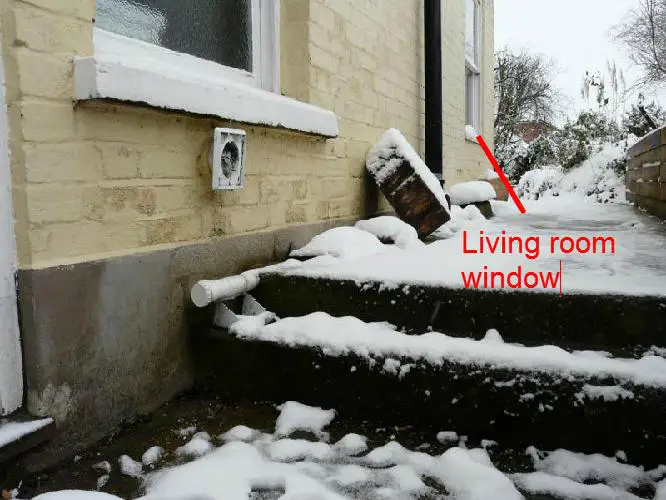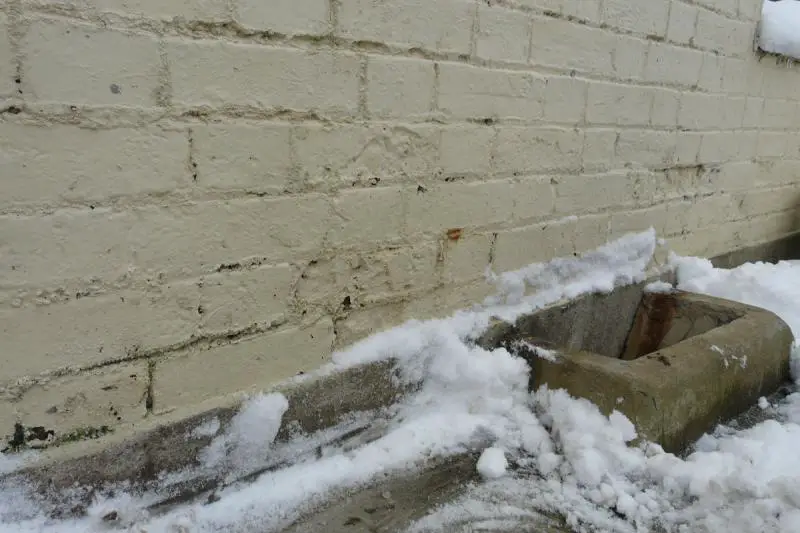We have recently moved into an old Victorian property which has not been very well maintained. We are currently renovating the living room and planned to insulate the solid wall internally. We have removed the lath and plaster and the stud work that held the laths and found a few of the bricks are damp (they powder away when you rub them) and the plaster under the laths on the solid wall is crumbling off and cracked (and also the purple coat is powdering away as well).
The wall in question is an external wall and someone has raised the level of the concrete path (outside) alongside this external wall by about a foot, so is probably above the DPC (if there is one). The outside wall has been painted over, I am not sure if this is helpful or if the wall needs to breath to help dry out.
I would like to know what I need to do with this wall, before I proceed with the stud wall insulation. I can think of three options, but would very welcome more ideas or improvements for the best solution??
Pictures are in the Damp Living Room album.
Option 1.
Just attach the stud wall insulation to the wall and hope for the best.
Option 2.
Remove the plaster and attach the stud wall insulation to the bare brick.
Option 3.
Remove the plaster and apply a coat of under plaster and then the fix the stud wall insulation.
The wall in question is an external wall and someone has raised the level of the concrete path (outside) alongside this external wall by about a foot, so is probably above the DPC (if there is one). The outside wall has been painted over, I am not sure if this is helpful or if the wall needs to breath to help dry out.
I would like to know what I need to do with this wall, before I proceed with the stud wall insulation. I can think of three options, but would very welcome more ideas or improvements for the best solution??
Pictures are in the Damp Living Room album.
Option 1.
Just attach the stud wall insulation to the wall and hope for the best.
Option 2.
Remove the plaster and attach the stud wall insulation to the bare brick.
Option 3.
Remove the plaster and apply a coat of under plaster and then the fix the stud wall insulation.




